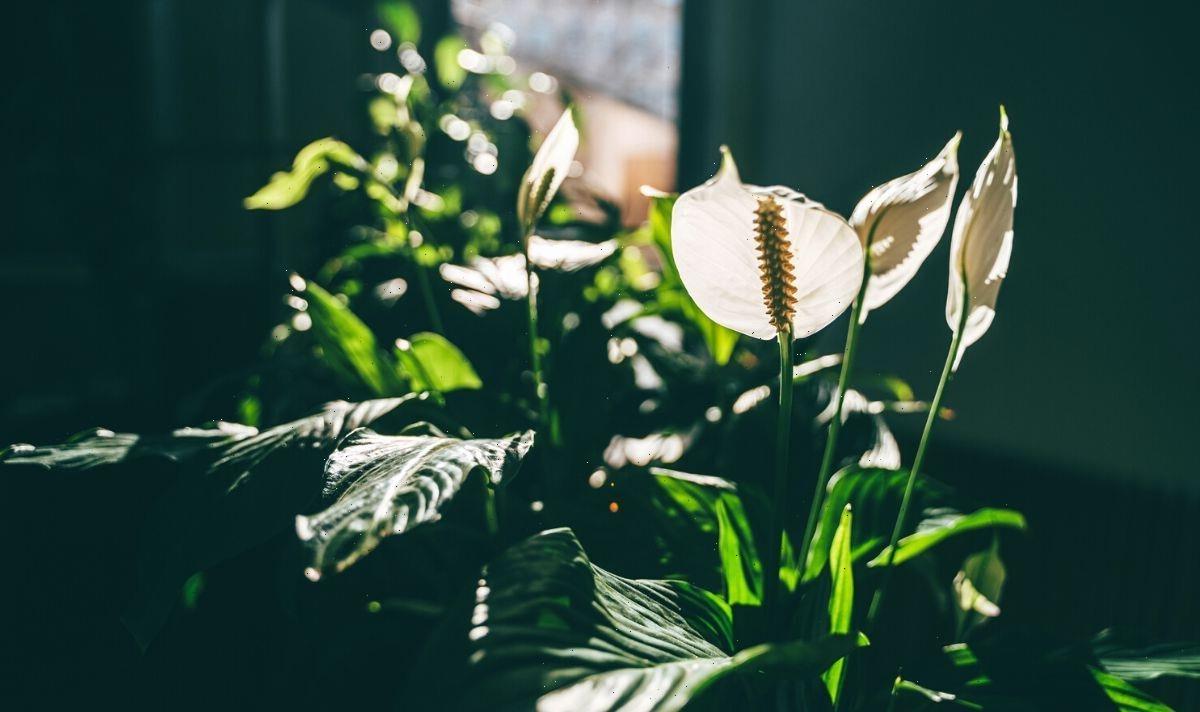Royal Horticultural Society offer advice on Peace Lily plants
We use your sign-up to provide content in ways you’ve consented to and to improve our understanding of you. This may include adverts from us and 3rd parties based on our understanding. You can unsubscribe at any time. More info
Also known as closet plants, the peace lily is one of the most popular houseplants for offices as well as most rooms around the house. Not only do they survive in low light and are easy to care for, but they also produce magnificent white flowers that can captivate the beholder. Although they are relatively easy to care for, peace lilies, like all other plants, have certain care requirements. If the plant is deprived of proper growing conditions, it will stop blooming, and in worse cases, growing altogether.
With a following of over 500,000 on social media and over 10 years experience in houseplants, Vladan Nikolic has shared his top tips for encouraging a peace lily to bloom.
Taking to his blog, Mr.Houseplant, the indoor plant pro shared his experience of owning peace lilies. He said: “I’ve had these large peace lilies for two years now and they’ve been blooming non-stop. Every three to four months they put out a new set of white flowers, from five to 12 flowers at a time.”
According to Mr Houseplant, light is the main factor to encourage peace lilies to bloom. He said: “The most important thing is that the more light you provide it with, the faster the plant will develop and reach that flowering level of maturity.
“Flowering takes a lot of energy from the plant, so it needs a lot of light to bloom.” Vladan suggested that peace lily owners get a light metre so they can be certain of how much light it gets.

The pro added: “Regardless of its natural flowering season, with enough light, you can get your peace lily plant to bloom indoors any time of year.”
While it is true that peace lilies can survive in incredible low light conditions, the expert warned: “They will just be surviving, not thriving, their growth would be very slow, and they would definitely not bloom.”
He claimed that giving the houseplant more light will encourage the plant to “grow and bloom faster”.
Households should avoid putting their peace lily in direct sun right away and instead build up to it.
DON’T MISS
‘Game-changing’ item to tackle mould on bathroom sealant – ‘amazing’ [TIPS]
‘Excellent’ method to rid ‘damp’ clothing smells with one ingredient [EXPERT]
‘Important hacks’ to stop cats pooing and peeing in your garden [INSIGHT]
The houseplant guru said: “It’s best to acclimate your peace lily to direct sun gradually.
“Start with very early morning sun, e.g. from eight to 9am, for a week, then gradually increase to two to three hours.”
Light intensity also depends on where you’re located as the sun will be stronger in some places than others.
Vladan added: “Be careful to not let its leaves lean against a window. If the window gets too hot, that can burn the leaves.

Watering peace lilies can also encourage them to bloom and not enough could result in them not flowering, according to experts at Blooming Backyard.
They said: “Peace lilies love moisture. They require watering two to three times a week, preferably with distilled water as they can be sensitive to some tap water chemicals and compounds.”
If distilled water is a stretch, even filtered water will do. Just try to avoid tap water where possible.
The experts continued: “These plants will tell you when they need water by their drooping leaves.

“Some people use that as an indicator of when to water. But, that could be one of the main reasons your peace lily isn’t flowering.
“If the leaves are drooping or turning yellow or brown at the tips, the plant likely needed water a few days prior. These signs are the result of stress, and a stressed plant is unlikely to produce many flowers.”
Peace lily leaves turning yellow are one of the most common peace lily problems. Don’t let the soil dry out between watering, but don’t waterlog them either.
For those who notice that their peace lily is developing blackened stems, it may be a sign that they are being overwatered. This could be due to watering too soon, lack of drainage, or leaving the pot sitting in trays full of water.
Source: Read Full Article
